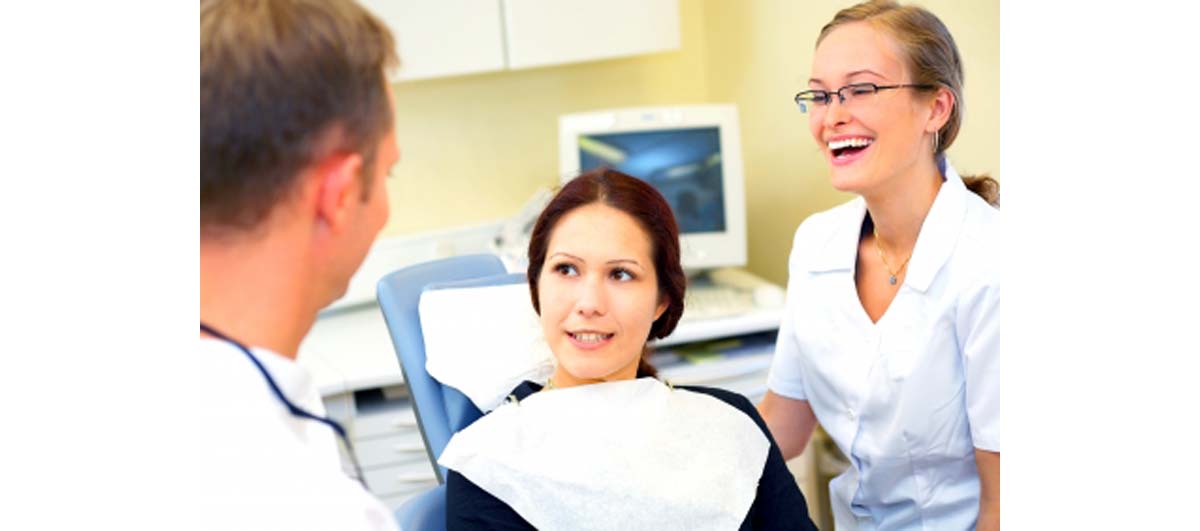Table of Contents
What precautions should you expect your dentist to take to protect you from catching infections from other patients, or the dentist himself or herself? Here are ten things to look for when you are at the dentist's office.

1. Your dentist should not be a vaccine protestor.
Maybe it's OK if you don't get your flu shot, but it's not OK if your dentist and your dentist's staff don't get theirs. Because dentists and dental hygienists have the potential to infect dozens or even hundreds of people if they come down with the flu, it's a Centers for Disease Control requirement that they get annual vaccinations.
2. Your dentist and his or her assistants should pass dental instruments with sharp edges pointed away from you.
Any cutting edge of a dental instrument should be pointed away from human flesh when it is being passed from assistant to dentist. Of course, the cutting edge will be applied in your mouth, but it dentist and staff should take care not to inure you or themselves.
3. Syringe needles should be capped between injections, and only one patient should treated with each syringe.
One of the accusations made against Dr. Harrington of Oklahoma infamy is that he re-used syringes between patients. It's OK to use the same syringe to give injections to the same patient during the same procedure, but the syringe should be new, capped with a one-handed "scoop" motion between uses, and discarded safely at the end of the visit.
4. There should always be a barrier between you and your dentist, and between you and your dental hygienist.
Dentists and hygeinists should always wear face masks when working on your teeth or gums, and a face shield is required for surgical procedures.
5. Your dentist should inquire whether you are allergic to latex.
At least on your first visit to a dentist's office, you should be asked if you have any allergies. This includes allergies to latex, especially important since the doctor may be wearing latex gloves while working in your mouth.
6. Your dentist should change gloves between patients.
This is a no-brainer, but it's surprising how often hurried dentists forget. If you never see your dentist putting on gloves when entering the room to treat you, don't be afraid to ask why. Gloves should never be washed, sterilized, or otherwise treated for re-use. They are used once and then thrown away. Double-gloving is not necessary to prevent transmission of infection.
7. Hands should be washed with soap and water between patients.
Look for evidence of handwashing in the dentist's office. Hands should be washed with soap (it does not have to be antimicrobial) between patients and whenever they become soiled with blood or tissue.
8. Dentists should never wear artificial nails.
Artificial nails and nail jewelry interfere with putting on gloves, and can tear gloves.
9. Reusable surgical instruments should be sterilized with heat, not chemicals.
Bleach, as mentioned in the Harrington case, can cause damage to surgical instruments, rusting them, and forming nooks and crannies in which bacteria can hide.
10. Floors, walls, sinks, and other housekeeping surfaces need to be clean, too.
The dentist's office must be cleaned each and every day, although ordinary household cleansers are adequate if no blood has been spilled. Mops and cleaning cloths should never be allowed to stand in a bucket between use. They should be thrown away after a single use, or allowed to dry out between uses.
- Puttaiah R, Miller K, Bedi DR, Shetty S, Almas K, Tse E, Kim BO, Youngblood D, Minquan D. Comparison of knowledge, attitudes and practice of dental safety from eight countries at the turn of the century. J Contemp Dent Pract. 2011 Jan 1.12(1):1-7.
- Scully C, Haj M, Porter S. Infection control in dentistry. BMJ. 1993 Jun 26.306(6894):1754.
- Photo courtesy of on Flickr:
- Photo courtesy of on Flickr:

